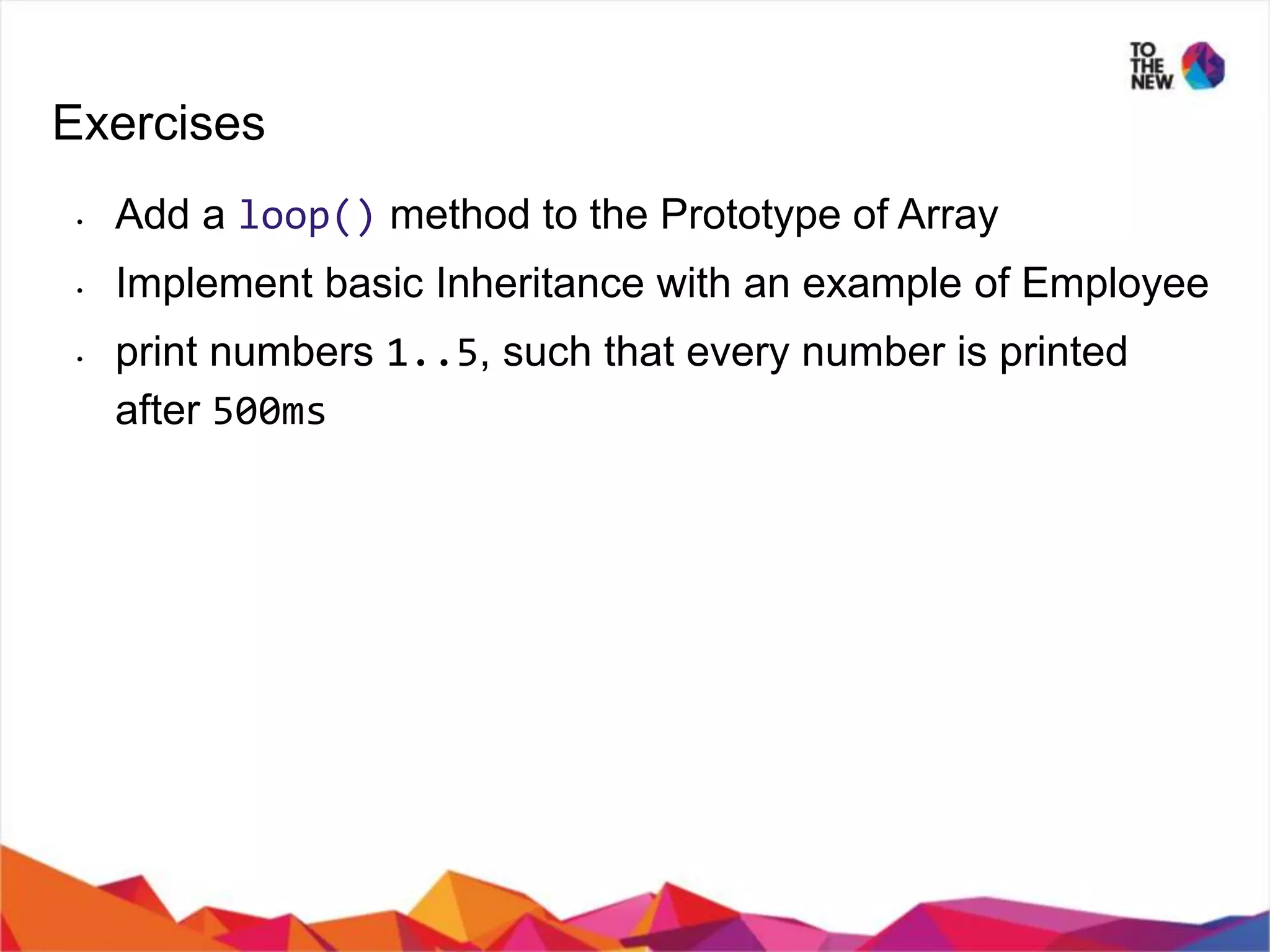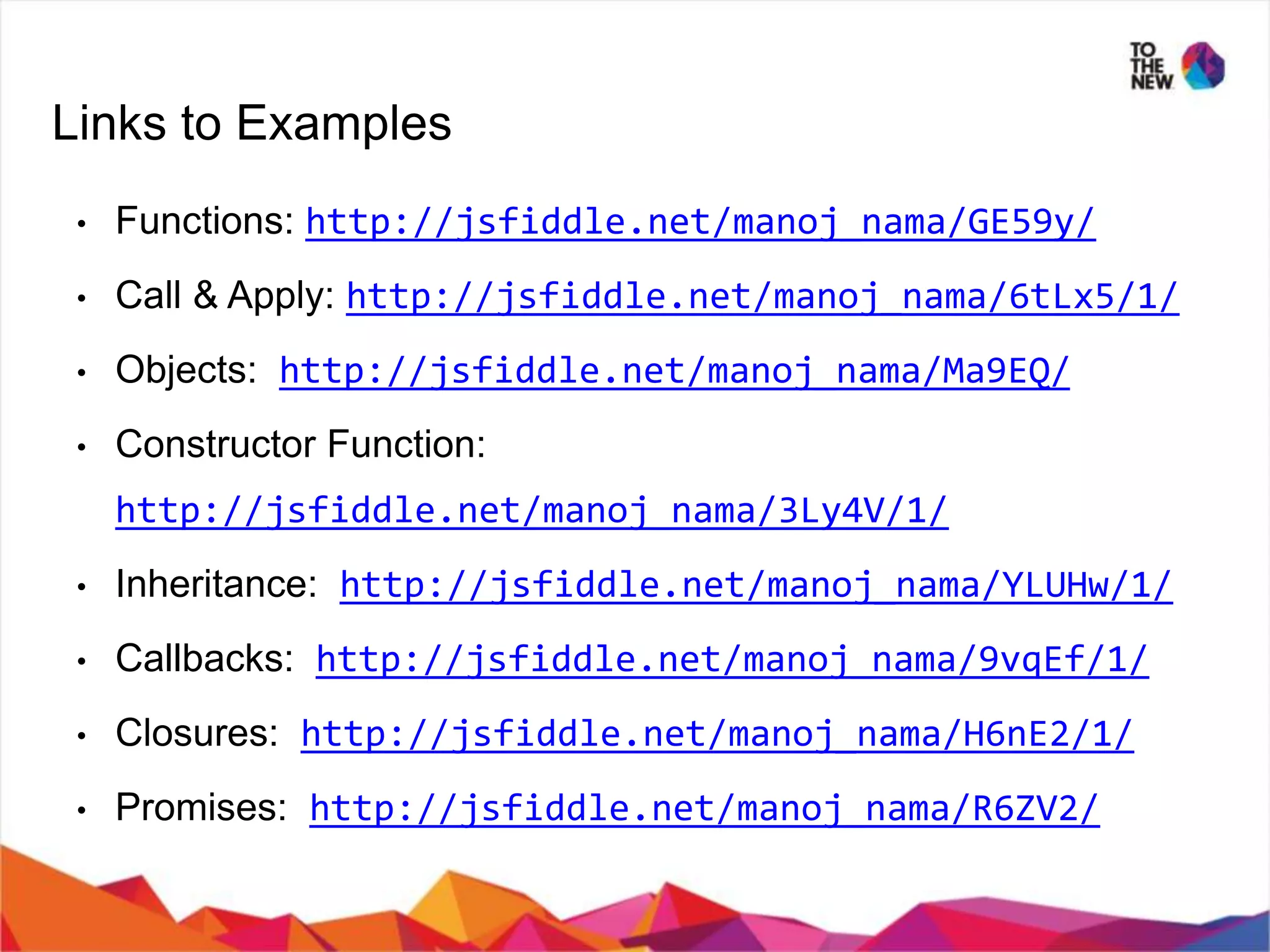The document provides an introduction to object-oriented JavaScript, covering key concepts such as functions, objects, prototypal inheritance, callbacks, closures, and asynchronous programming. It explains the importance of functions as first-class citizens, the role of objects, constructor functions, and the prototypal chain in inheritance. Additionally, it addresses the challenges of asynchronous operations and introduces control flow techniques like callbacks, promises, and the use of libraries such as async.js.



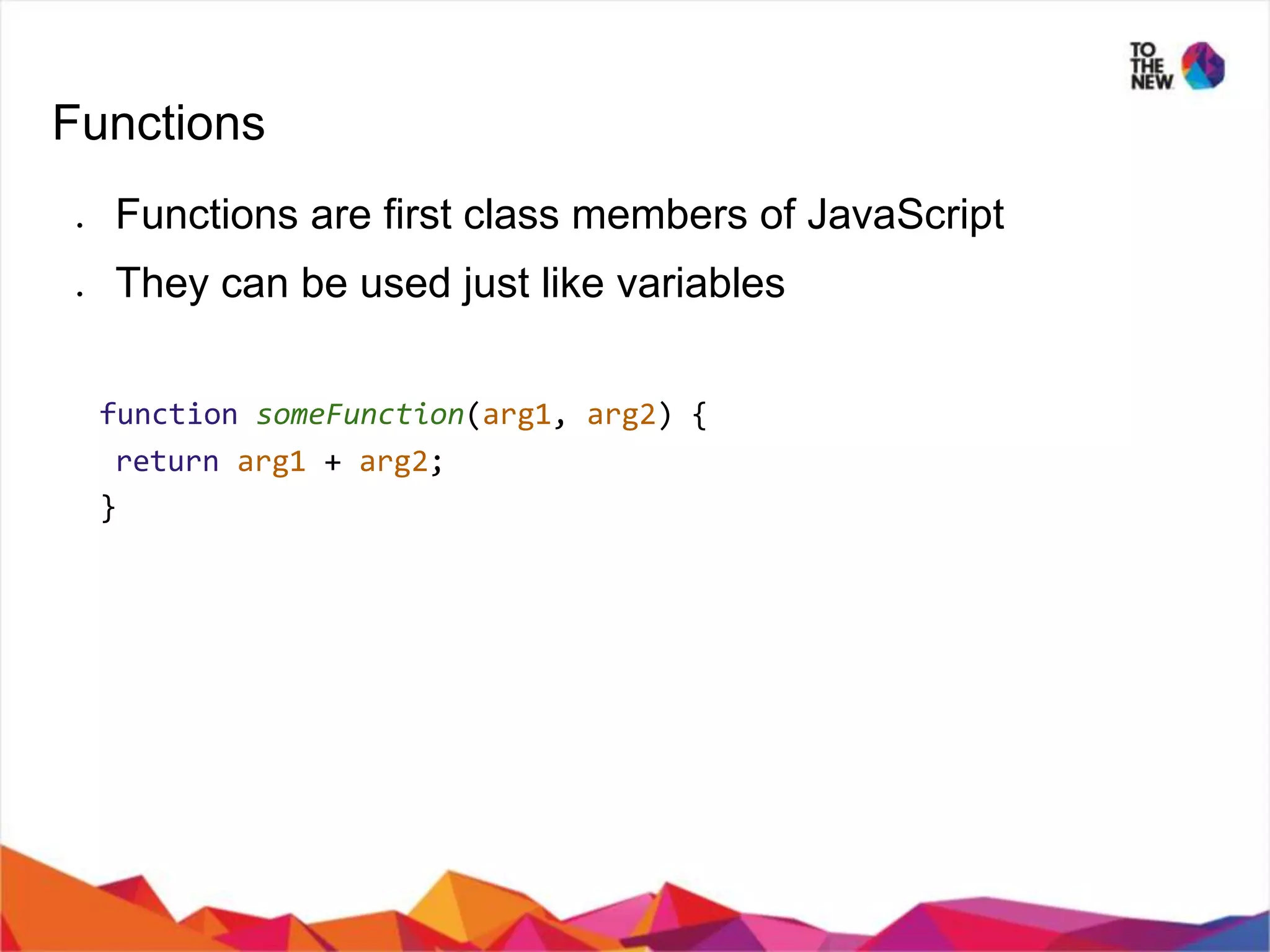
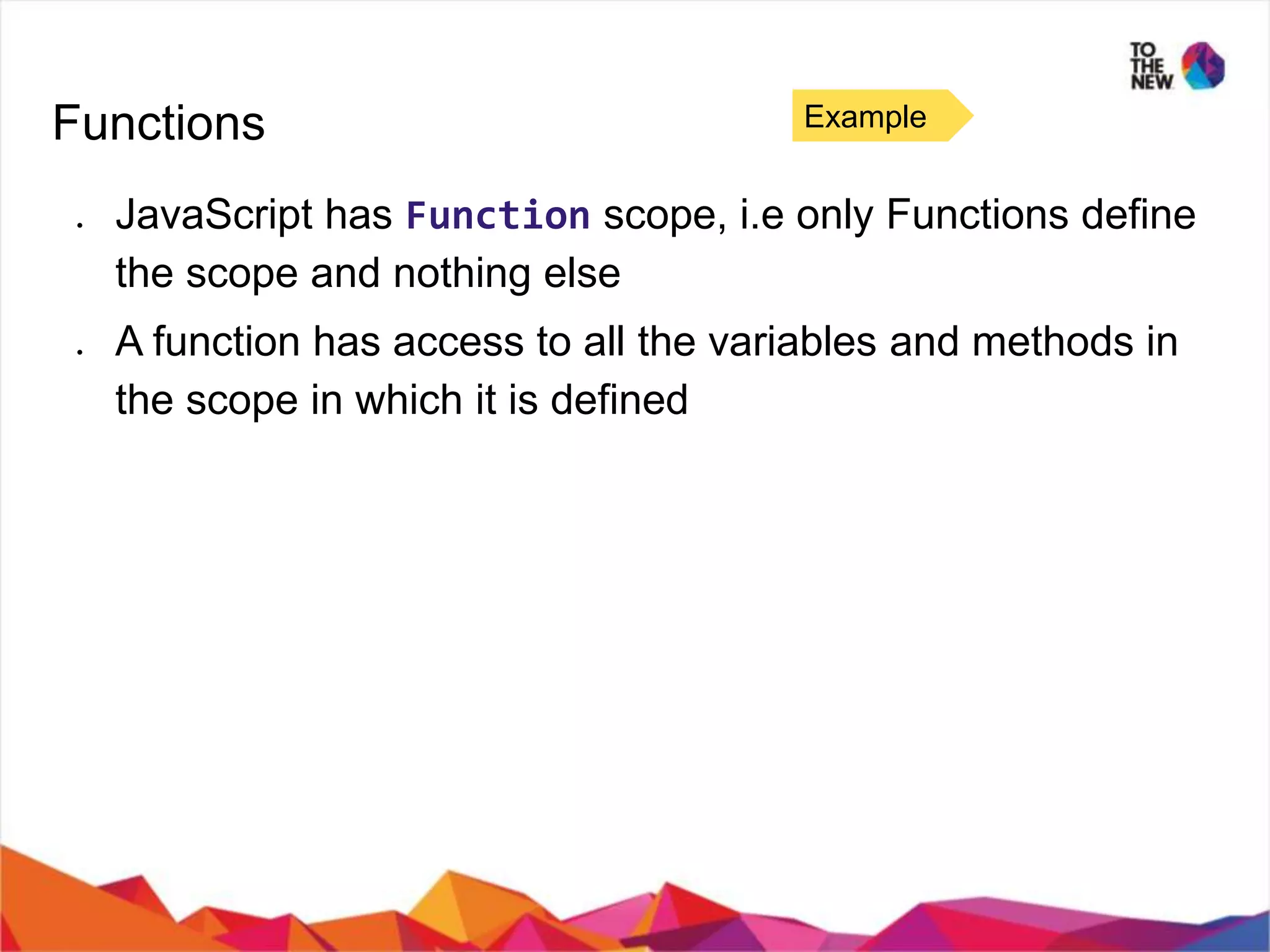
![Call & Apply ● Call/Apply both are used to call a function with the ability to change the this reference ● Only difference between the two is syntax ○ Call takes arguments as a list functionName.call(obj, arg1, arg2); ○ Apply takes an array of Arguments functionName.apply(obj, [arg1, arg2]); Example](https://image.slidesharecdn.com/anintroductiontoobjectorientedjavascript-2bymanojnama-140107011222-phpapp02/75/An-introduction-to-Object-Oriented-JavaScript-6-2048.jpg)
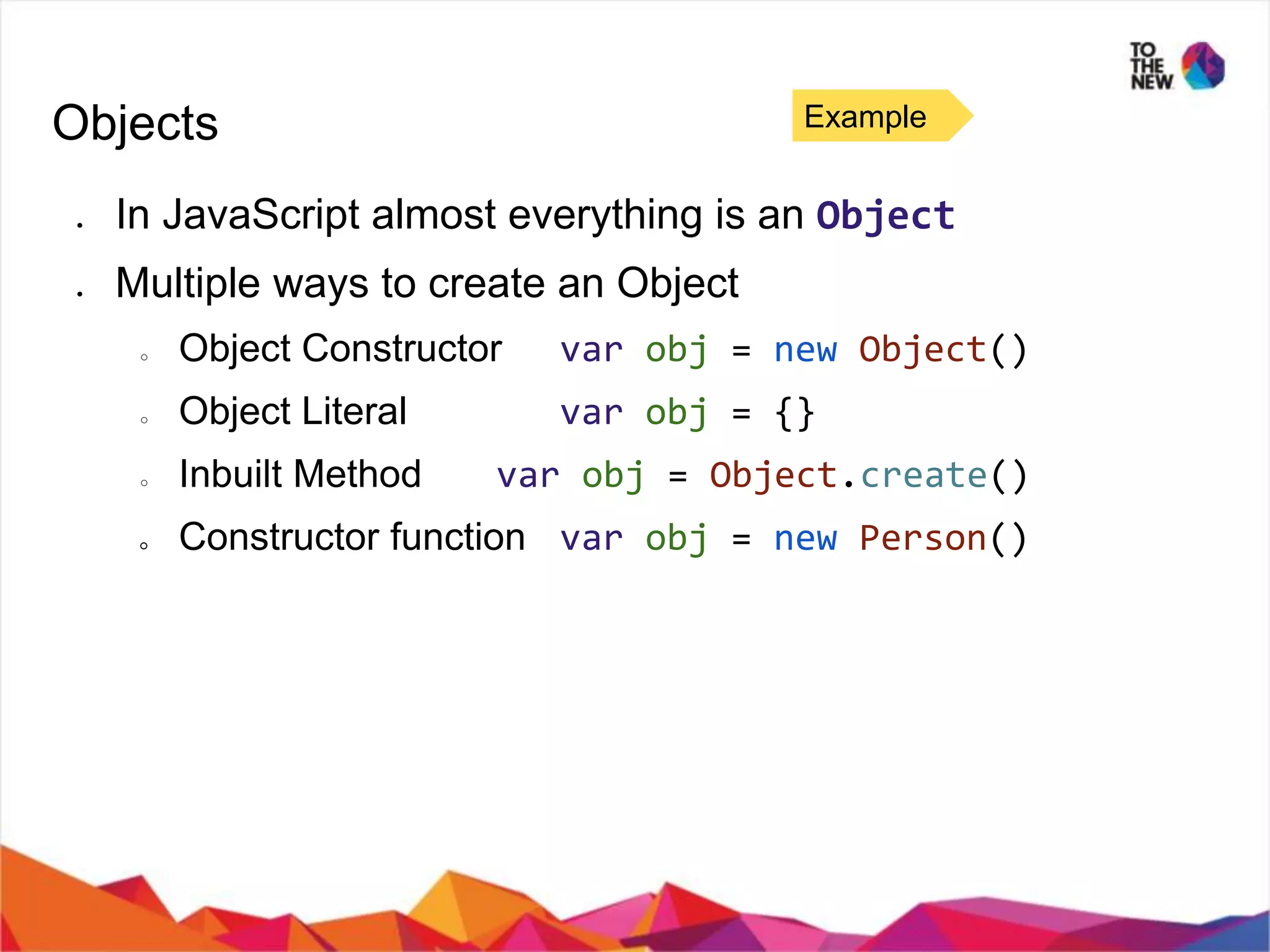
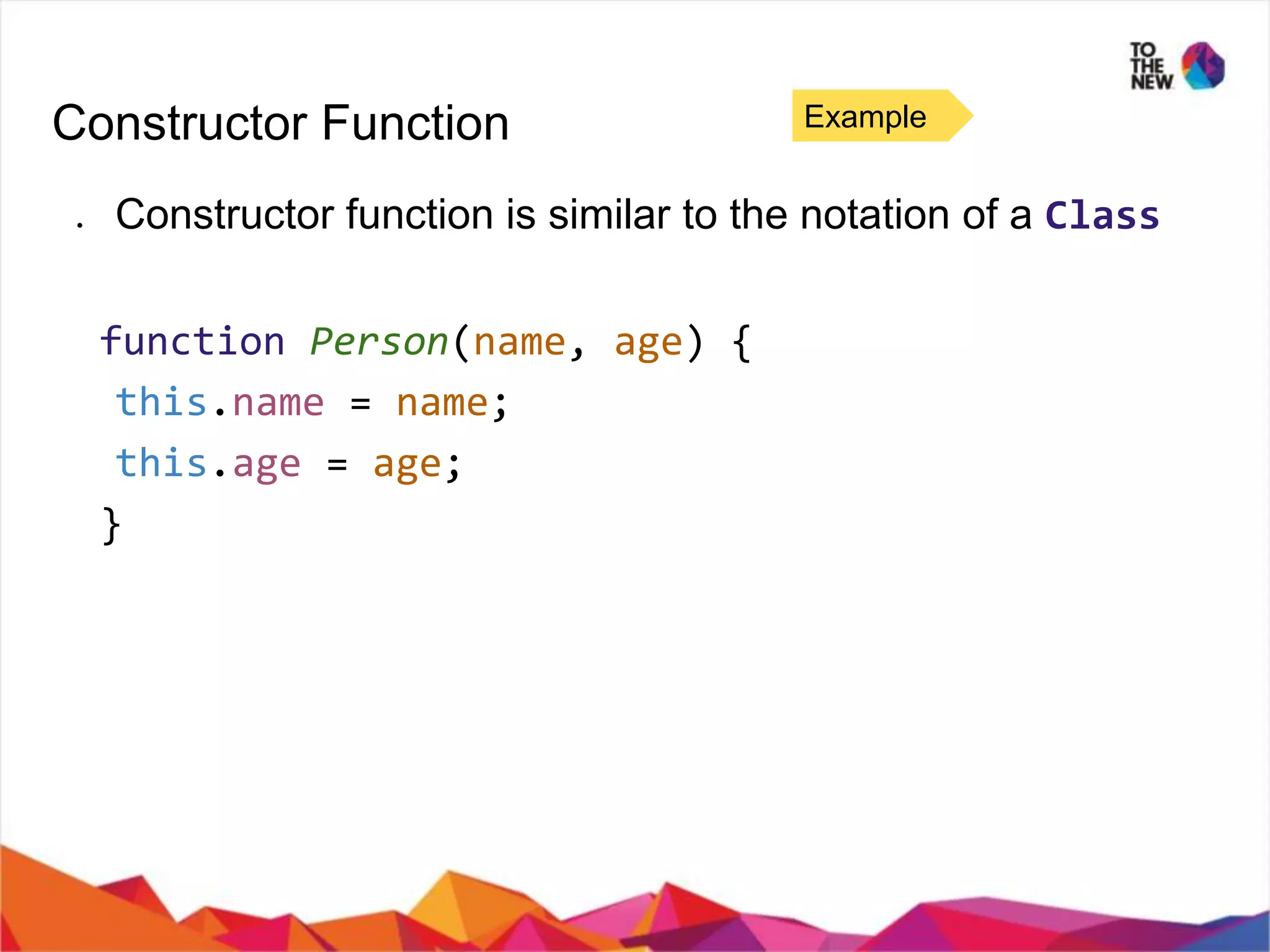
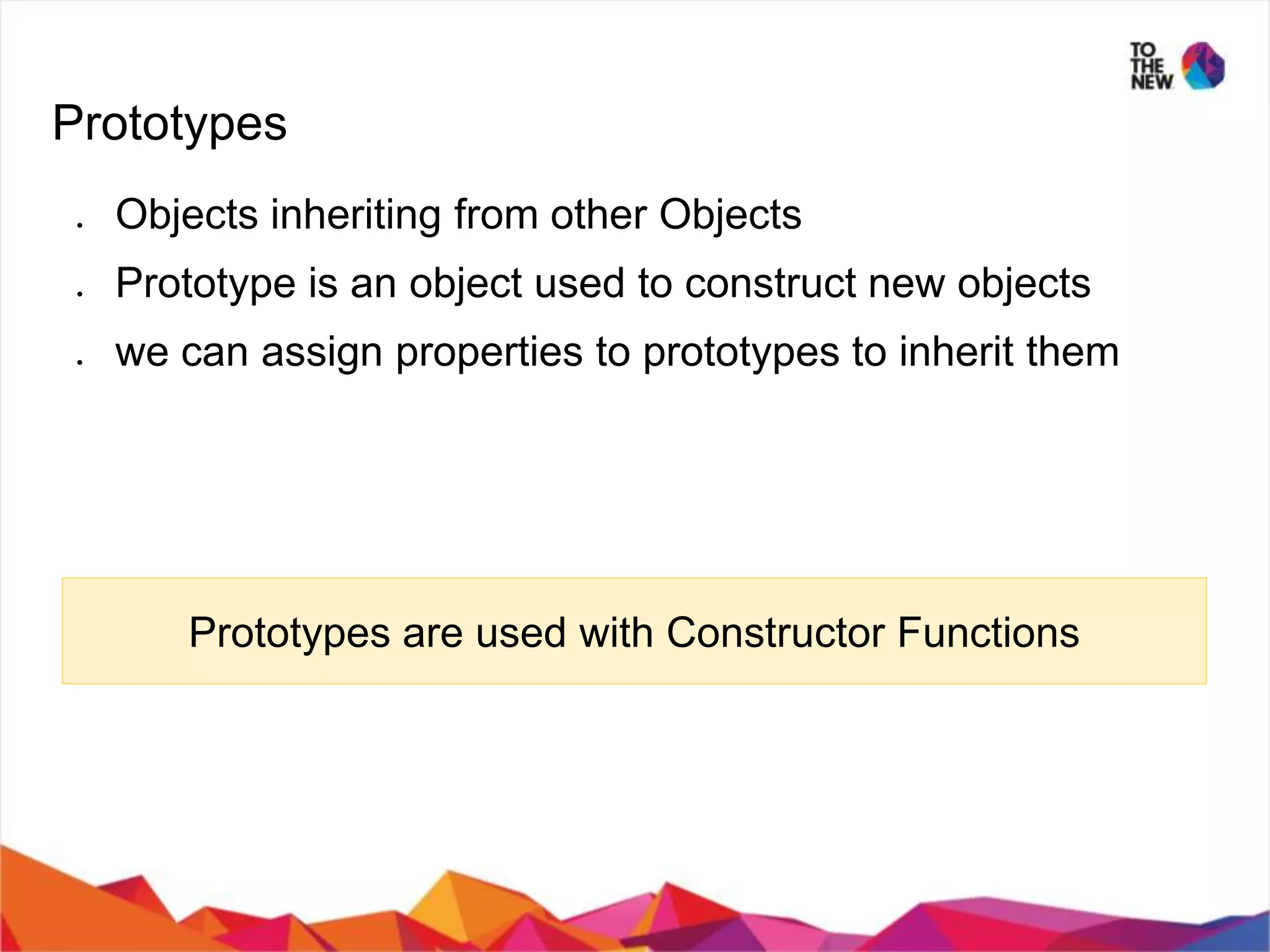
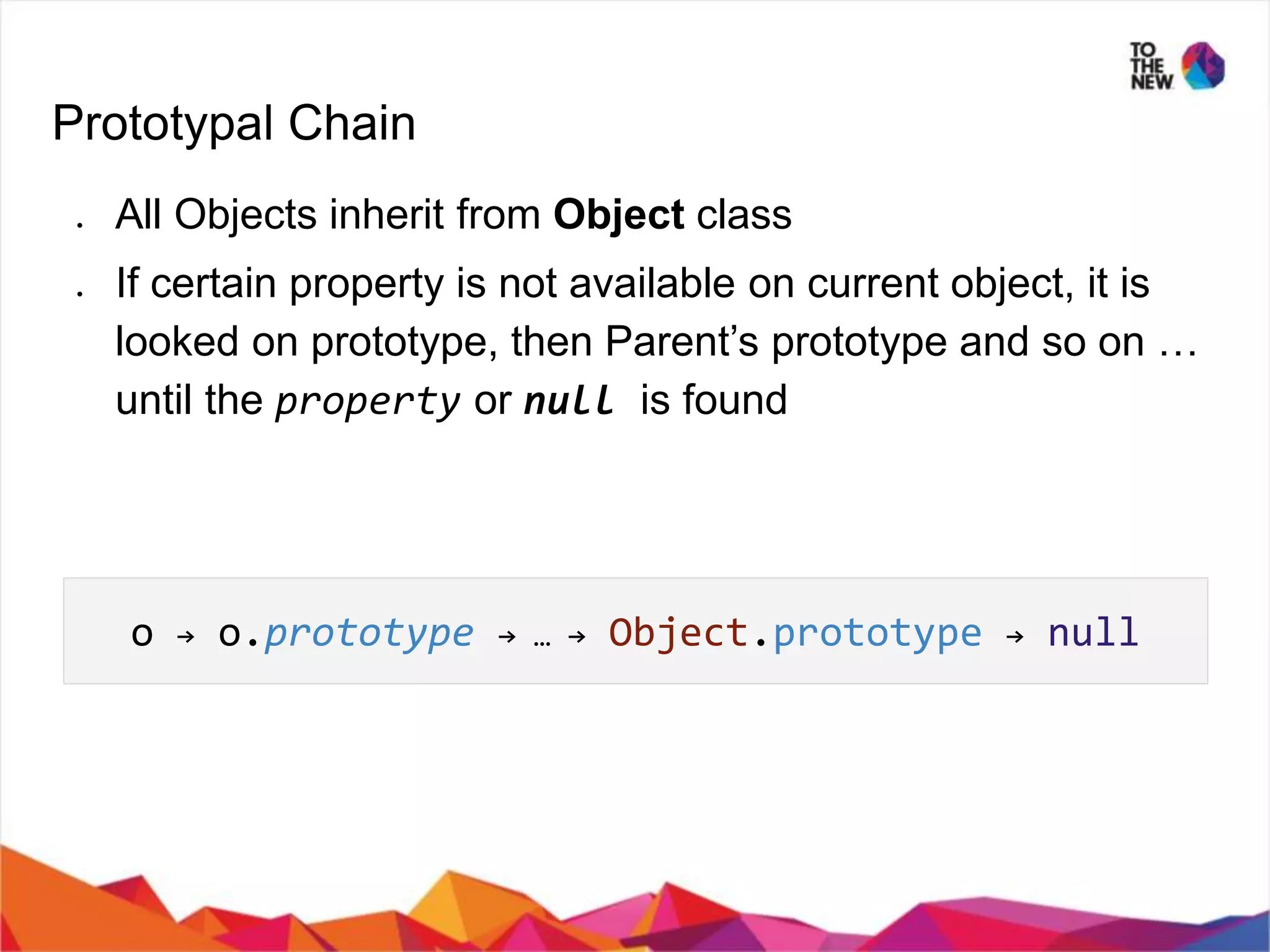
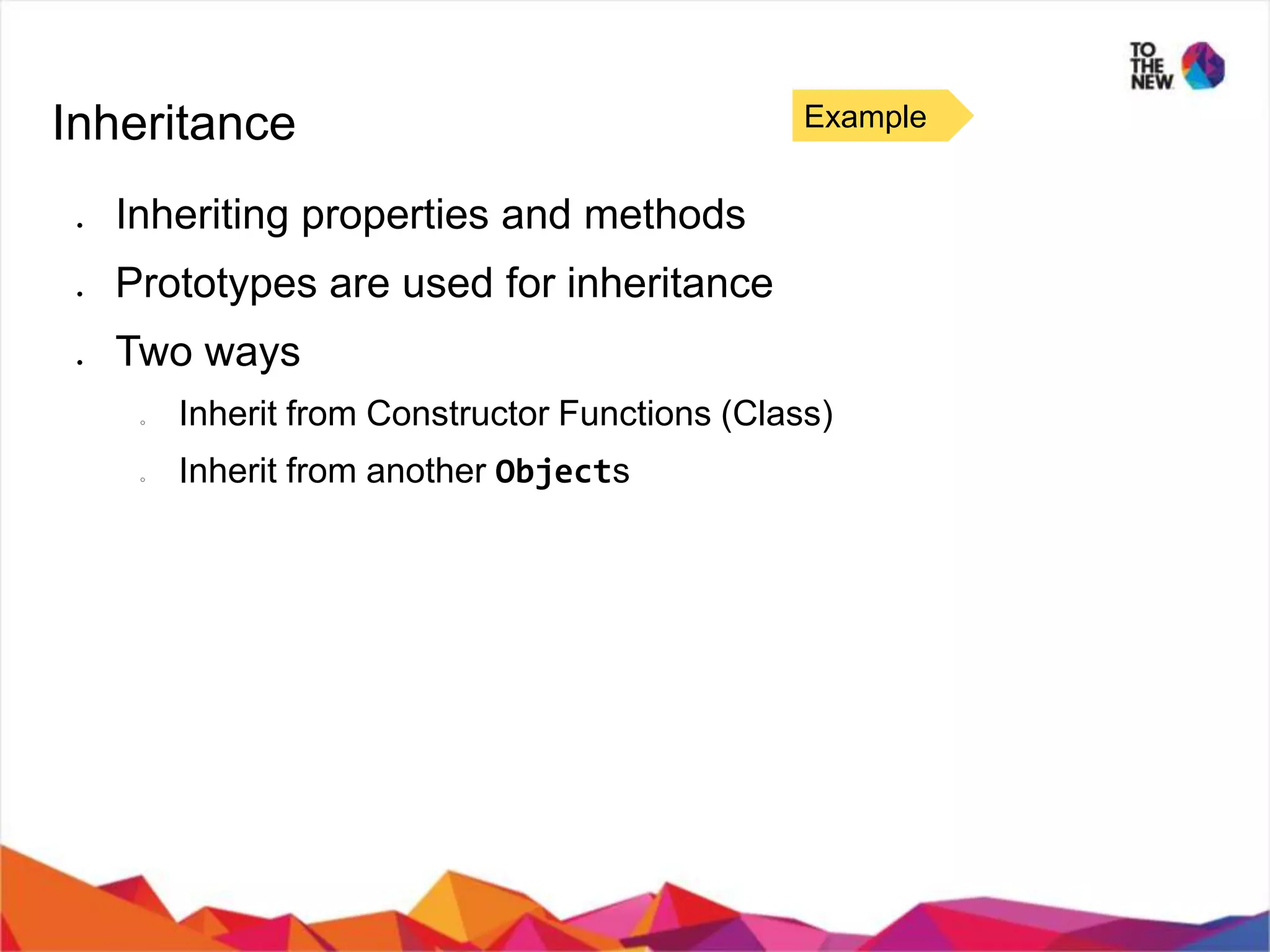
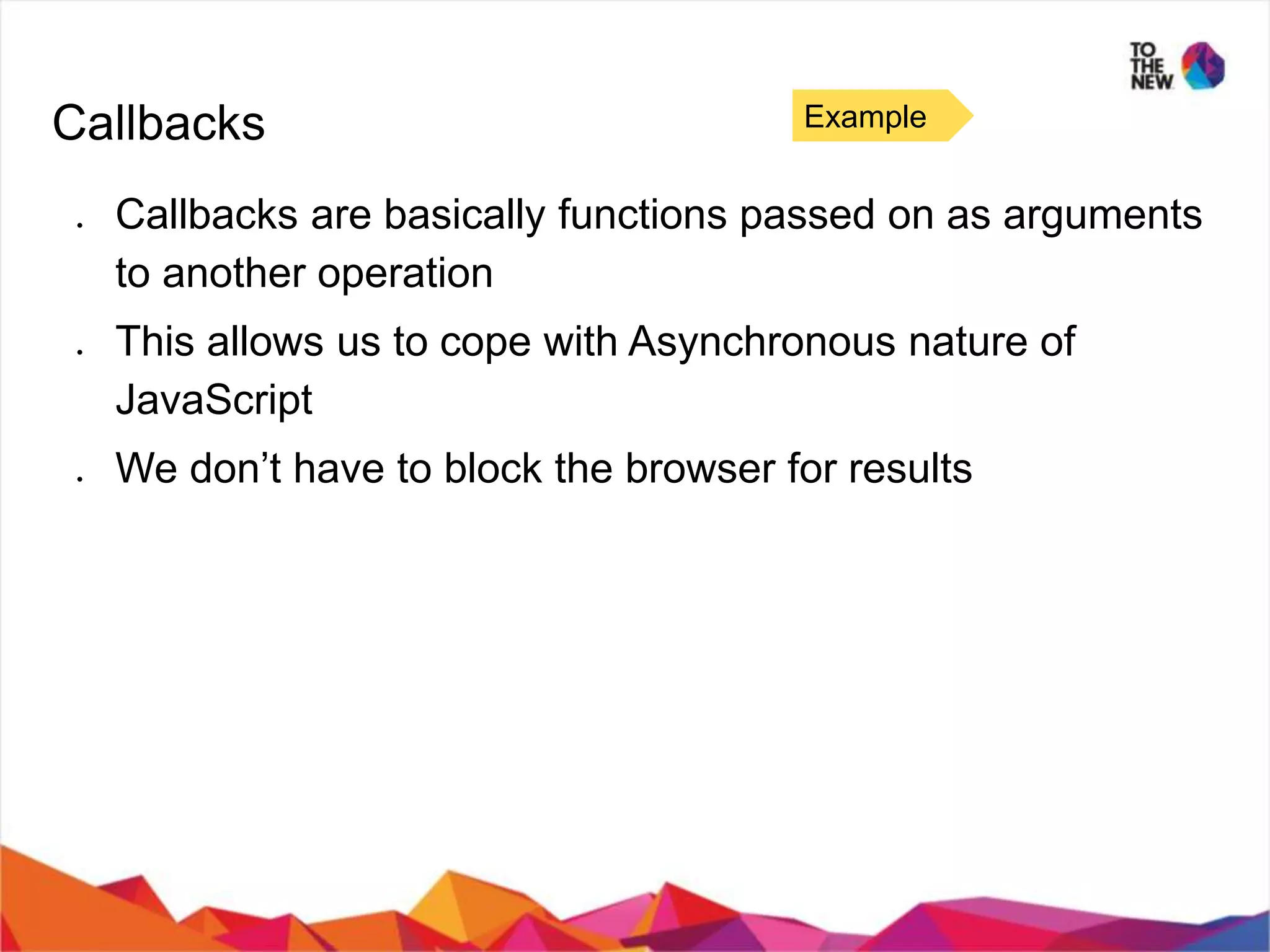
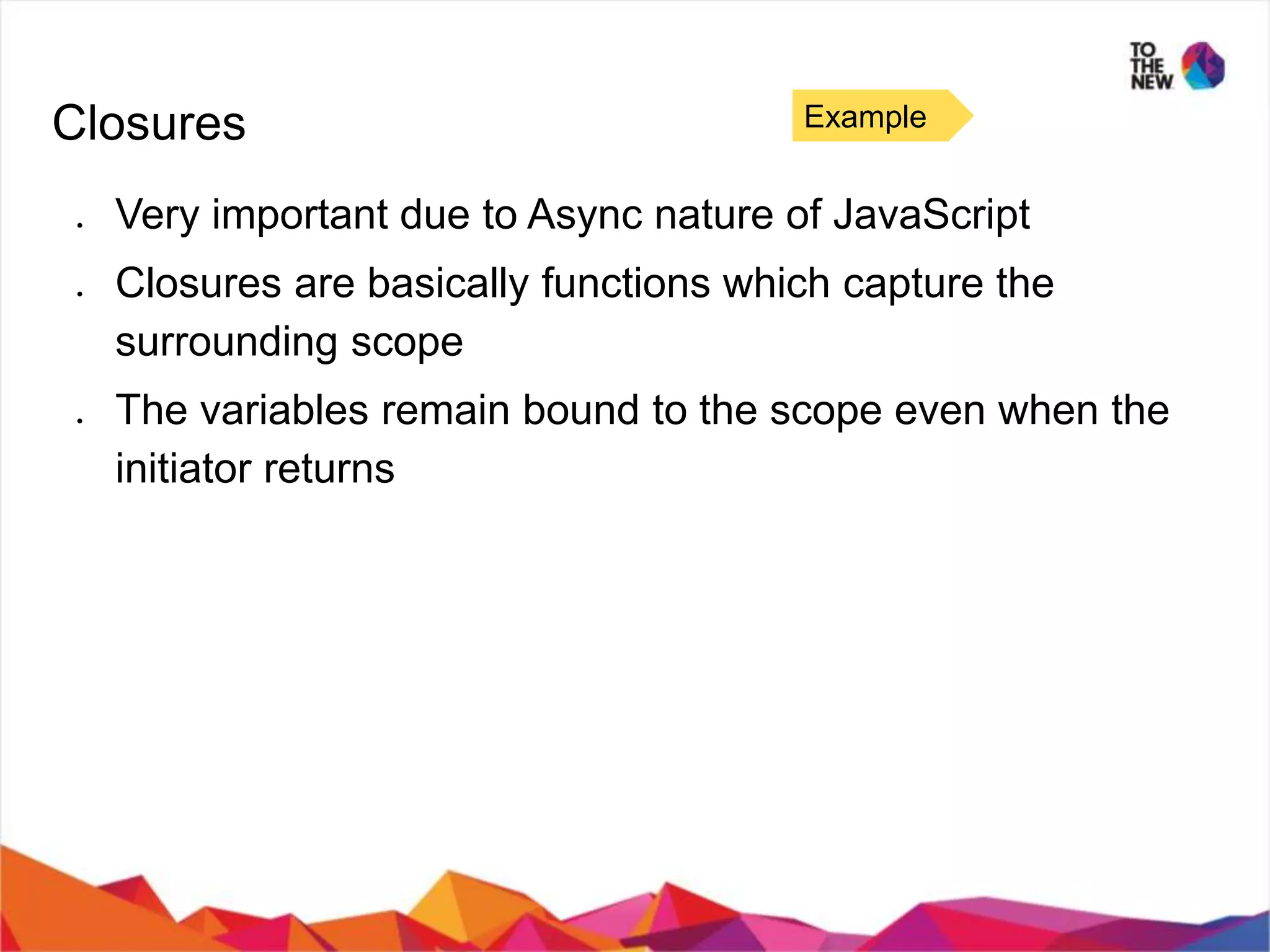
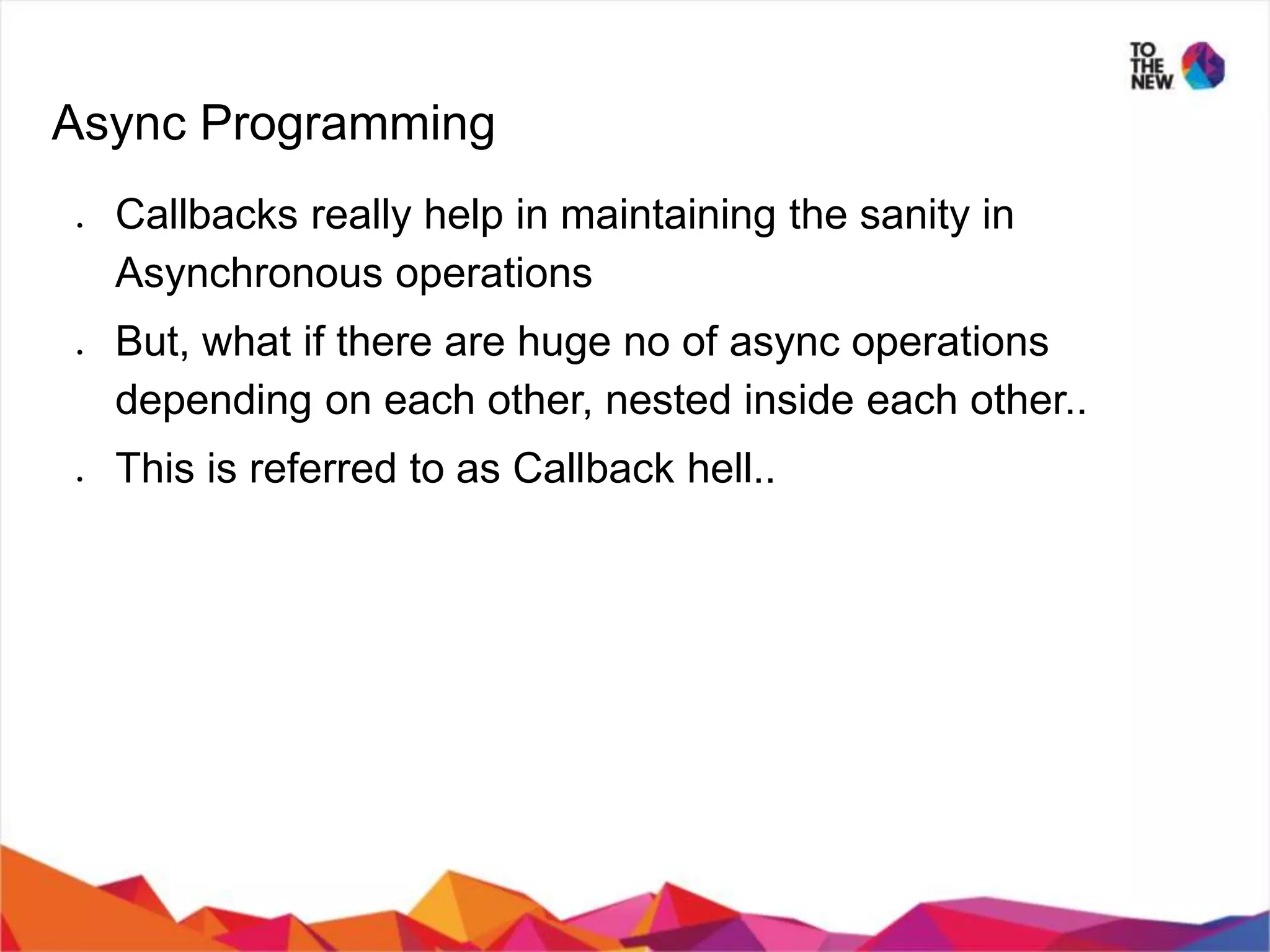
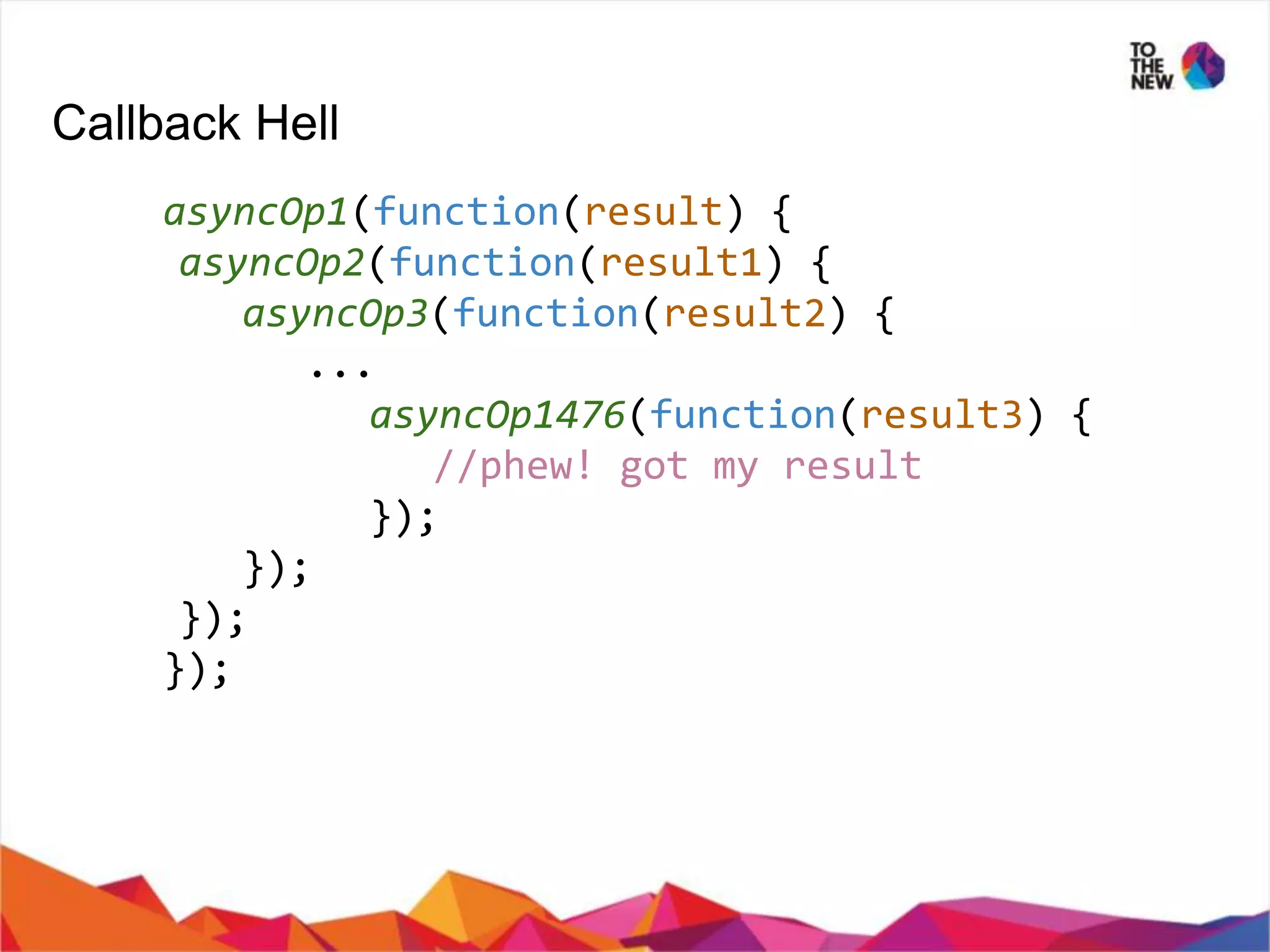
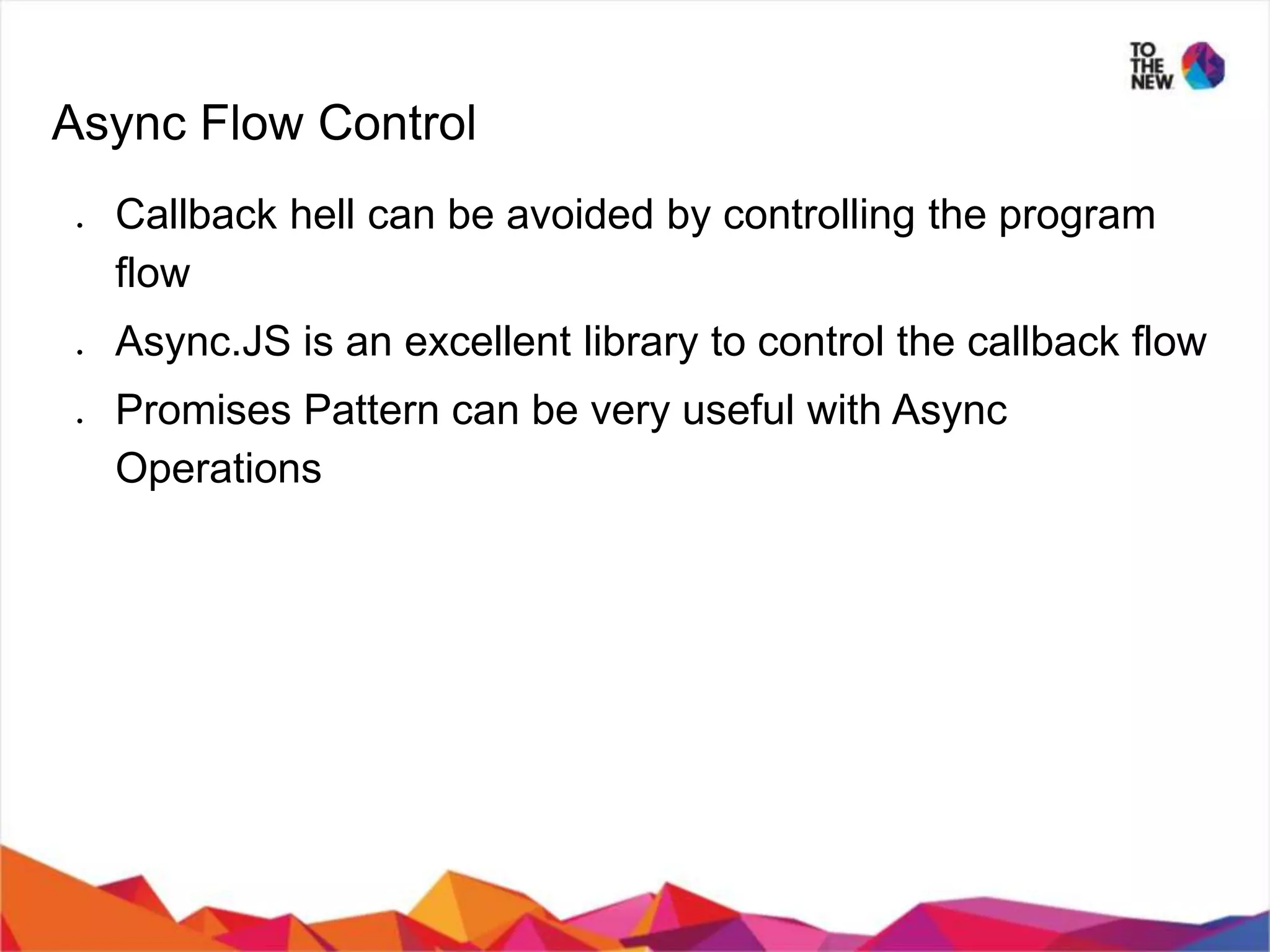
![Async Flow Control Example async.parallel([ function(callback) { callback(null, “data”); }, function(callback) { callback(null, “data2”); } ], //optional callback function(err, results) { //results: [“data”, “data2”] }); async.waterfall([ function(callback) { callback(null, “data”); }, function(arg1, callback) { //arg1: “data” callback(null, “data2”); } ], //optional callback function(err, result) { //result: “data2” });](https://image.slidesharecdn.com/anintroductiontoobjectorientedjavascript-2bymanojnama-140107011222-phpapp02/75/An-introduction-to-Object-Oriented-JavaScript-17-2048.jpg)
![Tips & Tricks ● use + to convert expressions to a number ○ +new Date() gives Timestamp ● use !! to convert any expression to a boolean ● Append array to another array ○ a = [1,2,3]; b= [4,5,6] ○ Array.prototype.push.apply(a,b)](https://image.slidesharecdn.com/anintroductiontoobjectorientedjavascript-2bymanojnama-140107011222-phpapp02/75/An-introduction-to-Object-Oriented-JavaScript-18-2048.jpg)
